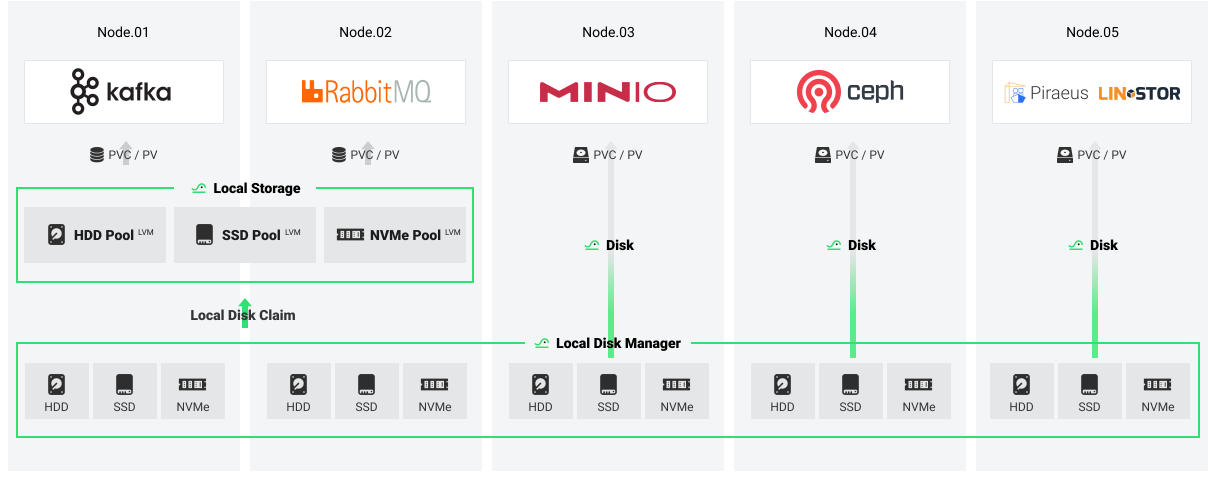Local Disk Manager¶
Local Disk Manager (LDM) is one of the modules of HwameiStor. LDM is used to simplify the management of disks on nodes. It can abstract the disk on a node into a resource for monitoring and management purposes. It's a daemon that will be deployed on each node, then detect the disk on the node, abstract it into local disk (LD) resources and save it to kubernetes.

At present, the LDM project is still in the alpha stage.
Concepts¶
LocalDisk (LD): LDM abstracts disk resources into objects in kubernetes. An LD resource object represents the disk resources on the host.
LocalDiskClaim (LDC): This is a way to use disks. A user can add the disk description to select a disk for use.
Note
At present, LDC supports the following options to describe disk:
- NodeName
- Capacity
- DiskType (such as HDD/SSD/NVMe)
Usage¶
-
Get the LocalDisk information.
kubectl get localdisk NAME NODEMATCH PHASE 10-6-118-11-sda 10-6-118-11 Available 10-6-118-11-sdb 10-6-118-11 AvailableGet locally discovered disk resource information with three columns displayed.
- NAME: represents how this disk is displayed in the cluster resources.
- NODEMATCH: indicates which host this disk is on.
- PHASE: represents the current state of the disk.
Use
kubectl get localdisk <name> -o yamlto view more information about disks. -
Claim available disks.
-
Apply a LocalDiskClaim.
cat << EOF | kubectl apply -f - apiVersion: hwameistor.io/v1alpha1 kind: LocalDiskClaim metadata: name: <localDiskClaimName> spec: description: # e.g. HDD,SSD,NVMe diskType: <diskType> # the node where disks attached nodeName: <nodeName> # the owner of the allocated disks e.g. local-storage,local-disk-manager owner: <ownerName> EOFAllocate available disks by issuing a disk usage request. In the request description, you can add more requirements about the disk, such as disk type and capacity.
-
Get the LocalDiskClaim information.
-
Once the LDC is processed successfully, it will be cleanup by the system automatically. The result will be recorded in the
LocalStorageNodeif the owner islocal-storage.
-